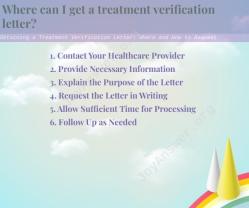Does the blood clot dissolve after tooth extraction?
No, the blood clot that forms after a tooth extraction does not dissolve. In fact, the formation and preservation of this blood clot are crucial for proper healing and to prevent complications. Here's what you can expect regarding the blood clot after a tooth extraction:
Formation of a Blood Clot: After a tooth is extracted, a blood clot naturally forms in the socket where the tooth once was. This blood clot acts as a protective barrier and serves several important purposes, including:
Protection: The clot covers the extraction site, protecting the underlying bone and nerve endings.
Healing: The clot provides a scaffold for new tissue and bone formation.
Prevention of Infection: It helps prevent bacteria from entering the socket, reducing the risk of infection.
Preservation of the Blood Clot: It is crucial to avoid actions that could dislodge or disrupt the blood clot during the initial healing period, typically the first 24-48 hours after extraction. Actions to avoid include:
Avoid Rinsing or Spitting Vigorously: Swishing liquids or spitting forcefully can dislodge the clot.
No Straws: Using a straw can create suction in the mouth, potentially dislodging the clot.
No Smoking: Smoking can disrupt the clot and delay healing due to the negative effects of nicotine and the physical action of inhaling.
Healing Process: Over time, the blood clot is gradually replaced by granulation tissue, which is a part of the body's natural healing process. This tissue eventually transforms into new bone and gum tissue, closing the socket left by the extracted tooth.
Signs of a Problem: If the blood clot is dislodged or fails to form properly, it can lead to a condition called dry socket (alveolar osteitis), which is characterized by severe pain at the extraction site. Dry socket can delay the healing process and requires prompt attention from your dentist or oral surgeon.
To ensure proper healing and minimize the risk of complications, it's essential to follow your dentist's post-extraction instructions carefully. This typically includes keeping the extraction site clean and avoiding certain activities that could disrupt the blood clot during the initial healing period.
If you suspect that your blood clot has been dislodged or if you experience severe pain, bad breath, or an unpleasant taste in your mouth after a tooth extraction, contact your dentist or oral surgeon for guidance and potential treatment. They can provide the necessary care to promote healing and alleviate any discomfort or complications.
Post-Tooth Extraction Care: What Happens to Blood Clots
After a tooth extraction, a blood clot will form in the empty tooth socket. This clot is important for healing, as it protects the bone and nerve endings from infection and irritation.
The blood clot will typically form within 15-30 minutes after the tooth extraction. It may be visible as a red or brown mass in the socket. The clot will gradually shrink over the next 7-10 days as the wound heals.
It is important to take care of the blood clot during the healing process. This includes avoiding smoking, chewing gum, and spitting. It is also important to avoid rinsing your mouth vigorously for at least 24 hours after the tooth extraction.
Tooth Extraction and Blood Clots: The Healing Process Explained
The healing process after a tooth extraction can take several weeks. During this time, it is important to follow your dentist's instructions carefully to avoid complications.
Here is a general overview of the healing process:
- Days 1-3: The blood clot will form and begin to shrink. You may experience some pain and swelling.
- Days 4-7: The clot will continue to shrink and the wound will begin to close. You may still experience some pain and swelling.
- Days 8-10: The clot will have completely dissolved and the wound should be closed. Any remaining pain and swelling should be gone.
If you have any concerns about the healing process, such as severe pain, swelling, or bleeding, be sure to contact your dentist.
Dental Surgery Recovery: Understanding Blood Clot Formation
Blood clot formation is a natural part of the healing process after dental surgery. The clot helps to stop bleeding and protect the wound from infection.
There are a number of factors that can affect blood clot formation, including:
- The type of surgery: Some types of dental surgery, such as wisdom tooth extraction, are more likely to result in bleeding and blood clot formation.
- The patient's medical history: Certain medical conditions, such as diabetes and hemophilia, can increase the risk of bleeding and blood clot formation.
- The patient's medications: Certain medications, such as blood thinners, can also increase the risk of bleeding and blood clot formation.
It is important to talk to your dentist about your individual risk factors for bleeding and blood clot formation before undergoing any dental surgery.
How to prevent blood clots after dental surgery
There are a number of things you can do to prevent blood clots after dental surgery, including:
- Follow your dentist's instructions carefully. This includes taking any prescribed medications and avoiding certain activities, such as smoking and spitting.
- Keep the wound clean and moist. Rinse your mouth with warm water several times a day. You may also want to use a saline rinse.
- Apply ice to the wound to reduce swelling.
- Avoid chewing on the side of your mouth where the tooth was extracted.
- Eat a soft diet for the first few days after surgery.
If you experience any signs of a blood clot, such as severe pain, swelling, or bleeding, contact your dentist immediately.












